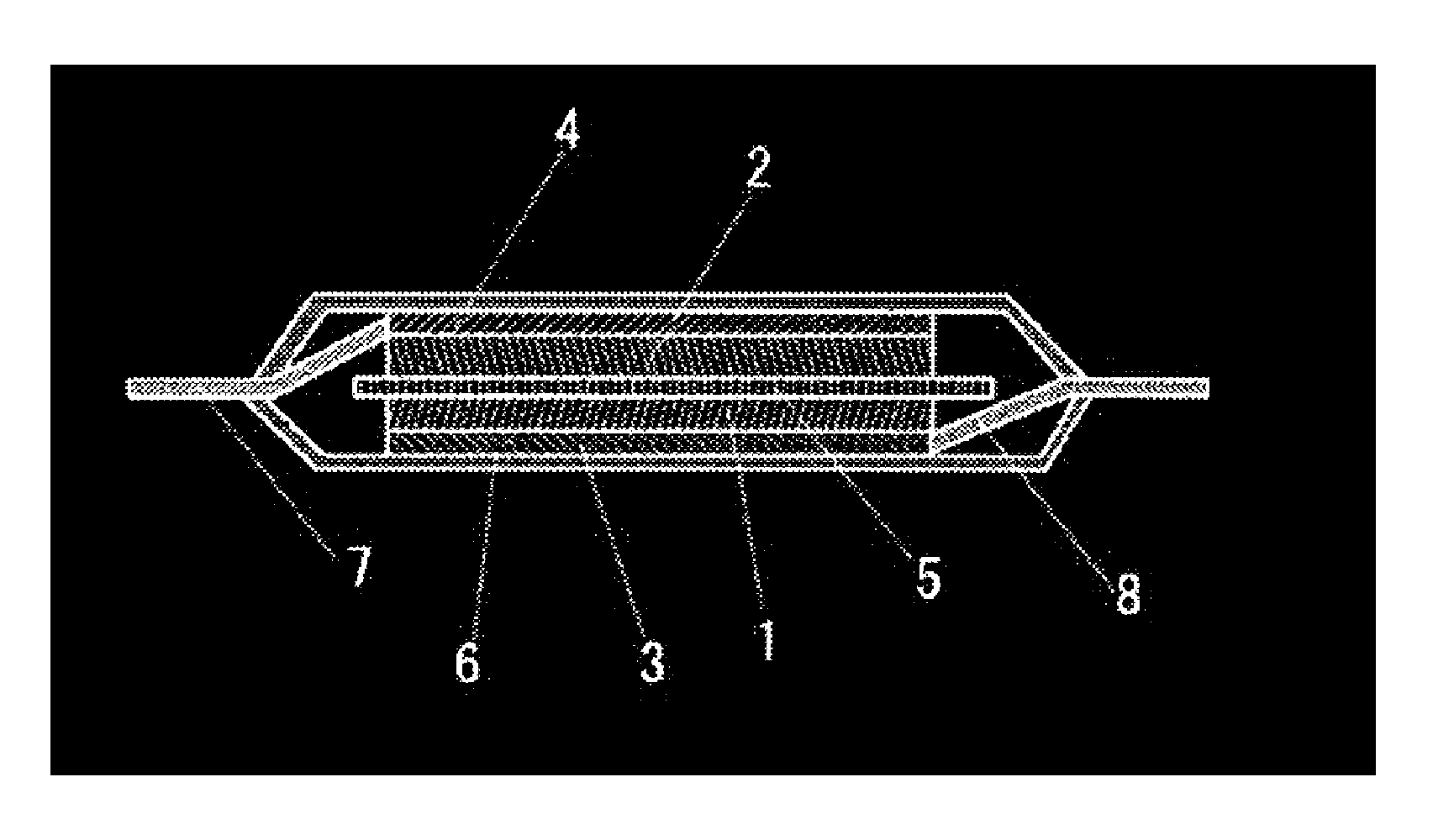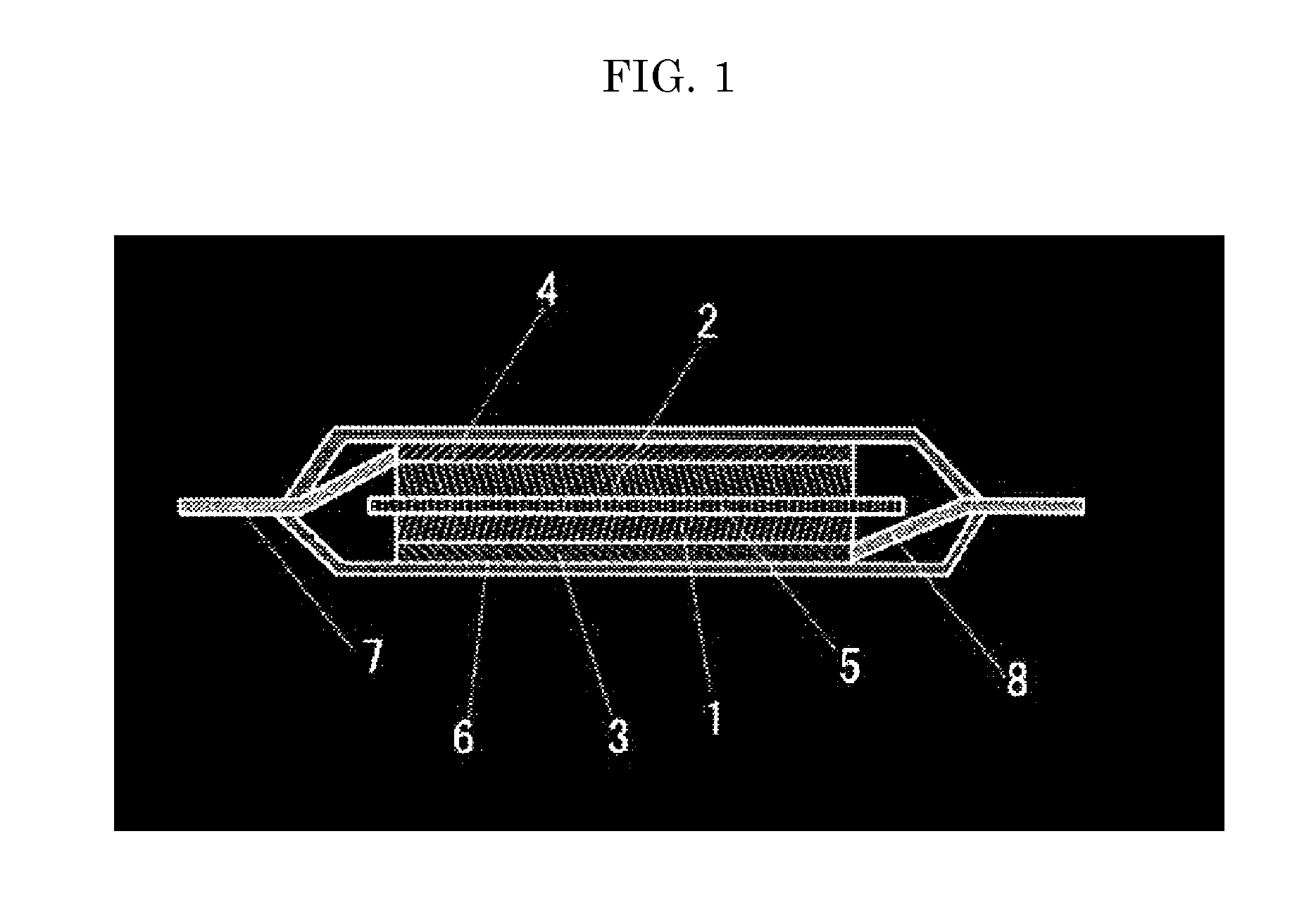Secondary battery
- Summary
- Abstract
- Description
- Claims
- Application Information
AI Technical Summary
Benefits of technology
Problems solved by technology
Method used
Image
Examples
example 1
[0070](Preparation of Negative Electrode)
[0071]A negative electrode slurry was prepared by kneading and dispersing graphite powder (average particle diameter (D50): 22 μm, specific surface area: 1.0 m2 / g) as a negative electrode active material and PVDF as a negative electrode binder uniformly in NMP so that the mass ratio of the respective solid content became 95.0:5.0. The negative electrode slurry was applied on copper foil having a thickness of 15 μm, the copper foil being a negative electrode collector. Thereafter, a negative electrode active material layer was formed by drying at 125° C. for 10 minutes to evaporate NMP. A negative electrode was prepared by pressing the negative electrode active material layer. In addition, the mass of the negative electrode active material layer per unit area after drying was set to 0.008 g / cm2.
[0072](Preparation of Positive Electrode)
[0073]LiMn2O4 powder (average particle diameter (D50): 15 μm, specific surface area: 0.5 m2 / g) as a positive e...
example 2
[0084]A secondary battery was prepared and evaluated in the same manner as in Example 1 except that CPVC (HA-05K manufactured by Tokuyama Sekisui Co., Ltd., degree of polymerization 500, chlorine content 67.3 mass %) was used as a positive electrode binder.
example 3
[0085]A secondary battery was prepared and evaluated in the same manner as in Example 1 except that CPVC (HA-53F manufactured by Tokuyama Sekisui Co., Ltd., degree of polymerization 1000, chlorine content 64.0 mass %) was used as a positive electrode binder.
PUM
| Property | Measurement | Unit |
|---|---|---|
| Percent by mass | aaaaa | aaaaa |
| Percent by mass | aaaaa | aaaaa |
| Percent by mass | aaaaa | aaaaa |
Abstract
Description
Claims
Application Information
 Login to View More
Login to View More - R&D
- Intellectual Property
- Life Sciences
- Materials
- Tech Scout
- Unparalleled Data Quality
- Higher Quality Content
- 60% Fewer Hallucinations
Browse by: Latest US Patents, China's latest patents, Technical Efficacy Thesaurus, Application Domain, Technology Topic, Popular Technical Reports.
© 2025 PatSnap. All rights reserved.Legal|Privacy policy|Modern Slavery Act Transparency Statement|Sitemap|About US| Contact US: help@patsnap.com


